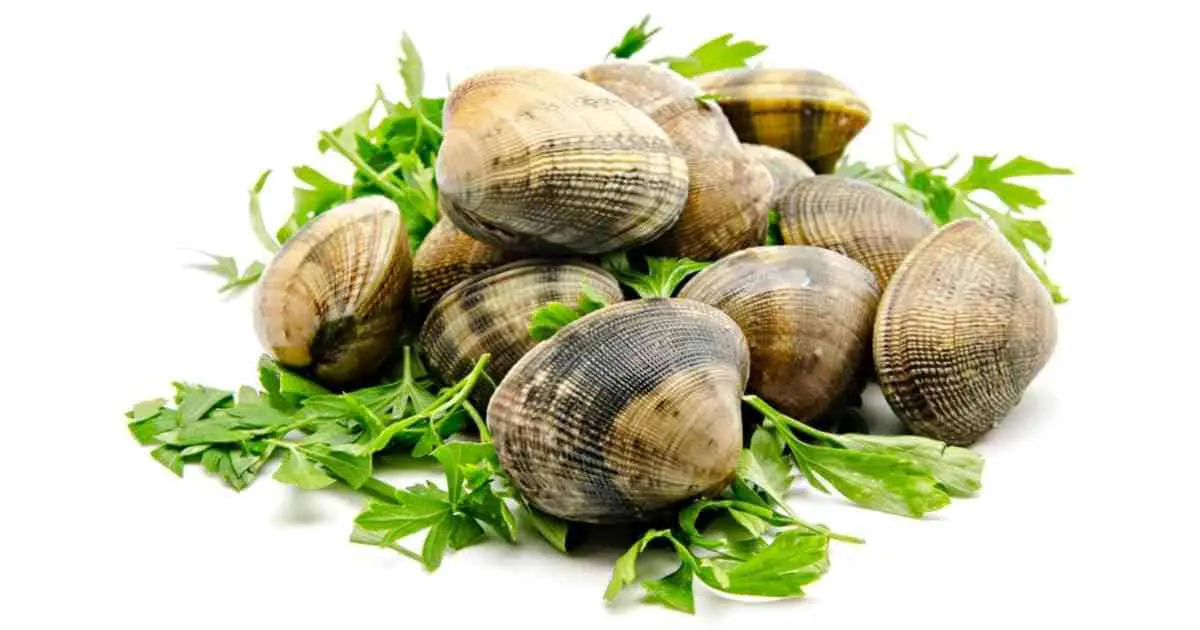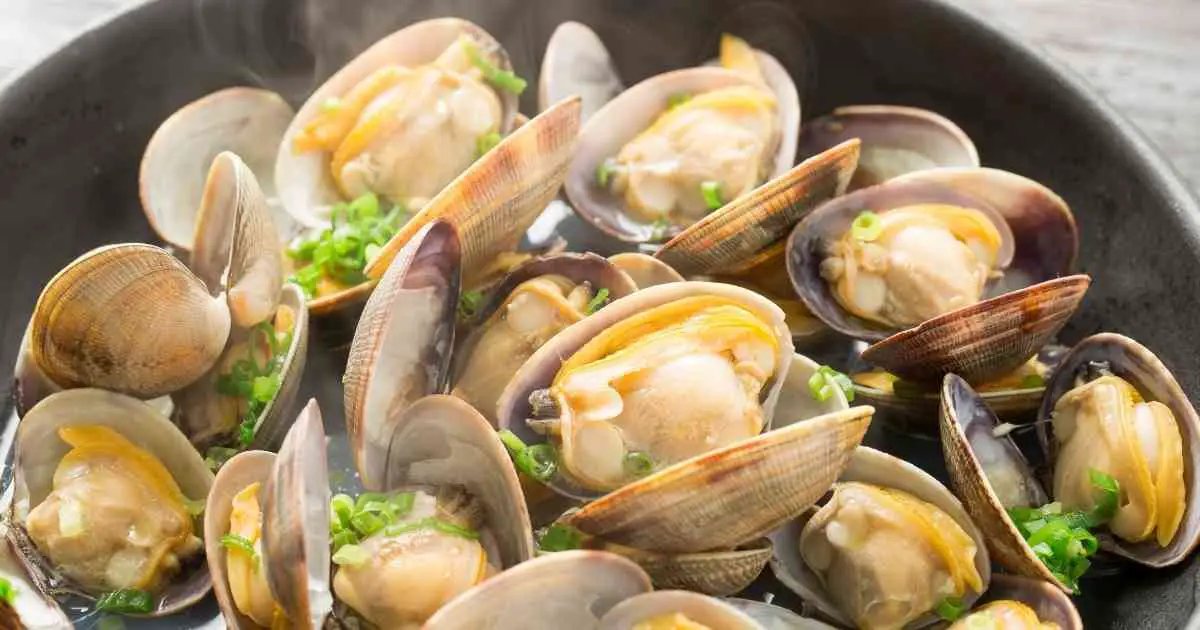While enjoying some clams for a summertime meal, you might find yourself wondering if you can feed some to your dog. Can dogs safely clams?
The answer is yes, dogs can safely eat clams. However, before giving your dog any kind of shellfish, there are several things to consider. In this post, we will cover the benefits of clams and how to safely feed them to your dog. Keep reading to learn more.
What Are Clams?

Clams are spherical mollusks that live in freshwater under the sand. Clams come in thousands of distinct species, all of different sizes. Clams are distinct from other shellfish because they contain internal organs.
Clams have a circulatory system, a basic digestive system, and a heart. They also have a distinct rubbery texture and a mildly fishy flavor. This is something some dogs may not like. Clams can be eaten raw as well as cooked.
They are a less popular dish compared to other shellfish options, such as oysters and mussels. Clams are freshwater shellfish, which is the main distinction between them and other shellfish.
They are only found in freshwater, even though they are frequently misrepresented as seafood. As a result, they are less dangerous than some of their saltwater counterparts that might contain more dangerous pollutants.
Can Dogs Eat Clams?
Yes, dogs can eat clams. It is important to note that any dietary changes — even small ones — can upset a dog’s stomach.
If your dog is accustomed to eating moist canned food or gravy and shredded chicken, don’t be surprised if it has a brief episode of stomach distress if you introduce clams to its diet. Symptoms of an upset stomach include vomiting, nausea, and watery stools.
If your pet experiences unpleasant reactions when you feed them clams the first time, it is best not to let them eat clams again.
Benefits of Clams for Dogs
Clams are a fantastic source of protein and offer many essential amino acids, such as alanine, glutamic acid, and glycine. The body cannot produce these on its own and must be acquired through diet. They are also a source of Omega-3 fatty acids.
Clams also provide Vitamin B12, which is essential for your dog’s brain function, nervous system, and digestive system. It is also helpful for your dog’s immune system. Clams are among the world’s most plentiful sources of B12, which is almost predominately obtained through diet.
They are one of the few animal sources that are abundant in the crucial vitamin C. It maintains and repairs bones and cartilage, improves the shine of your dog’s hair, boosts healthy skin, and supports a stronger immune system.
Clams also contain the following minerals:
- Calcium
- Zinc
- Magnesium
- Iron
- Selenium
- Phosphorous
If you would like to include seafood in your dog’s diet, clams are a great option because they don’t contain the heavy metal contamination that larger fish do.
How to Safely Feed Clams to a Dog

Clams are shellfish, just like shrimp, crab, and lobster. Overall, it’s ideal to limit giving your dog clams as treats.
Just be sure to keep the serving size small — no more than one or two clams at a time. However, if you want to include clams in your dog’s diet more frequently, your veterinarian can help you create precise feeding instructions for your pet.
Always check to see if the clams are fully cooked. Although eating raw shellfish has a greater risk of making your dog sick, eating raw clams may not always be toxic to dogs.
Ensure you steam the clams before feeding them to your dog. Also, do not include any spices or seasonings that could bother your canine companion’s stomach.
Before giving clams to your dog, don’t forget to remove the “meat” from the shell. Take precautions and make the effort to extract the edible meat first since the tiny shells could be choking hazards for your pet.
Furthermore, it’s advisable to refrain from giving your dog canned clams because of the high sodium content and preservatives that are frequently added to them.
While there are a couple of health risks involved with feeding clams to your dog, you can avoid this by obtaining your clams from a reliable source and limiting how much you give your dog.
Are There Foods that Are Harmful to a Dog?

Clams might not be bad for your dog, but other human foods are. Always talk to your veterinarian about the safety of human foods for your dog.
If you’re not certain something won’t hurt your pets, don’t give it to them. This includes a wide range of foods, such as:
- Yeast dough
- Mustard seeds
- Macadamia nuts
- Chocolate
- Grapes
- Raisins
- Leeks
- Garlic
- Peppers
These food items are listed by the Humane Society of the United States as potentially toxic to pets and can cause health issues. You should never give these foods to your pet to avoid any cases of poisoning in dogs.
Also, ensure that your dog does not have any allergic reactions to clams. Just like people, dogs can have allergies to shellfish.
Conclusion
Most times, your dog will want a small taste of whatever you’re eating. If clams are on the menu, you don’t have to ask, “Can dogs eat clams?” Now you know they’re safe to try.
Always ensure food is dog-friendly before letting your dog eat any human food. Clams are acceptable under the right conditions. Even though eating clams and other shellfish occasionally has many advantages, it is still advisable that you take some caution.
Overall, cooked clams are an excellent source of nutrient-rich food to supplement your dog’s regular diet.
